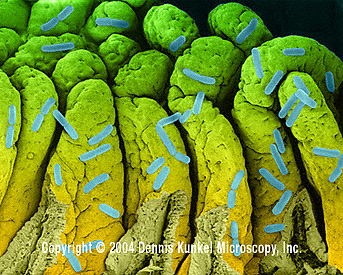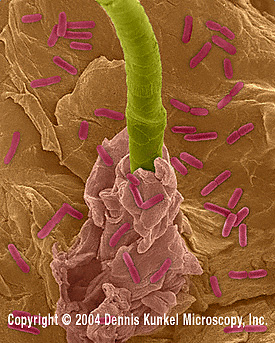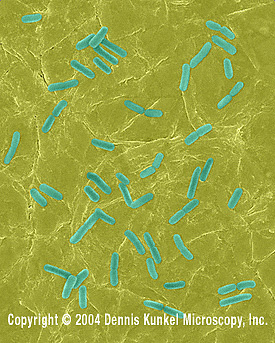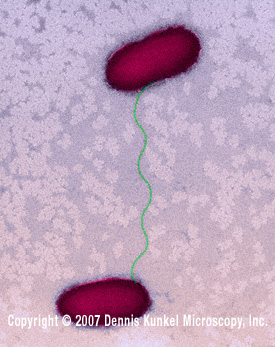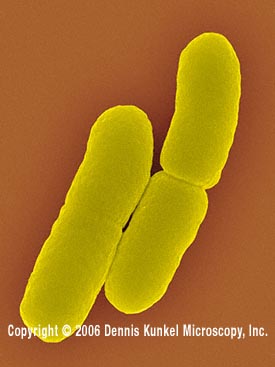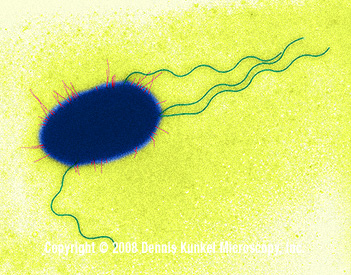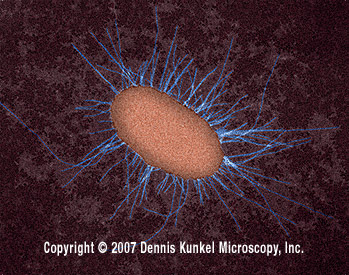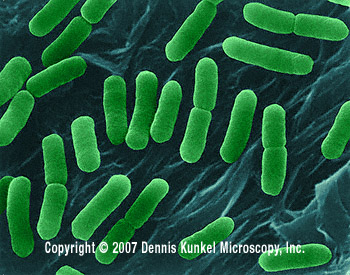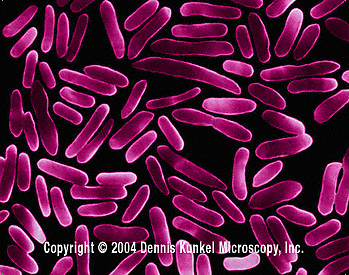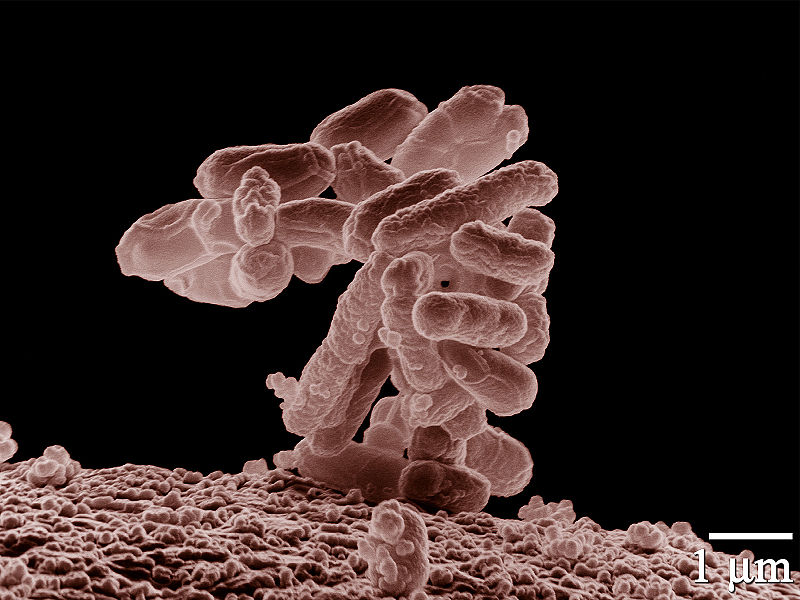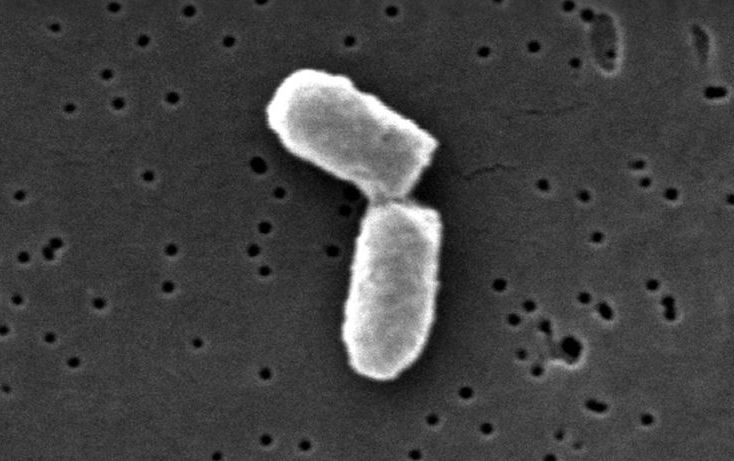INteraction
How does E. coli interact with other organisms?
E.
coli forms a
mutualistic
relationship with its host organism. This means that both
gain a
 fitness
benefit from one another. In fact, E. coli is actually an
essential
organism to the human body. E. coli is a crucial
microflora
organism in the human that helps with the absorption of Vitamin
K and other important vitamins for the human body in the colon.
E. coli receives a beneficial advantage from its
host in that it provides a safe, protected environment and it
receives the proper nutrients for proper growth and function.
fitness
benefit from one another. In fact, E. coli is actually an
essential
organism to the human body. E. coli is a crucial
microflora
organism in the human that helps with the absorption of Vitamin
K and other important vitamins for the human body in the colon.
E. coli receives a beneficial advantage from its
host in that it provides a safe, protected environment and it
receives the proper nutrients for proper growth and function.
However, it is difficult to vie for those nutrients when you are one of billions of bacteria of 300 hundred species, let alone those of the same species! As stated in the habitat section, E. coli has evolved to utilize nutrients found in lower concentrations, making them more likely to be able to find the proper nutrients and be more of a competition to other organisms.
An Aggregation of E. coli
Photo from a Public Domain, Retrieved from Wikimedia Commons
As you may have guessed, E. coli has a HUGE impact on humans when it comes to diseases, mostly E. coli O157:H7. Please visit Pathology to learn a lot more about the adverse effects this seemingly organism has on the body.
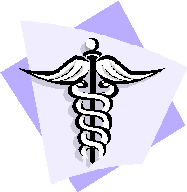
Back to Organismal Biology Websites
Questions or Comments: Contact Justine Moder
ŠApril 2008

